Latch Vs Flip Flop
Combinational Circuits in the digital electronics are the most fundamental types of circuits and the output of these circuits depends only on the input of the circuits.

Block Diagram of Combinational Circuit
Although most of the circuits encountered or required the combinational logic but also there is the requirement of the memory element in the circuits for storage purposes and such circuits are called the Sequential Circuits.
A sequential circuit contains the fundamental block i.e. the combinational logic part but also have one storage block since the output of the such circuits depends on not only on the input but also depends on the previous output of the circuit. So there arises the requirement of a storage element.

Block Diagram of Sequential Circuit
What is the basic storage element?
The basic storage elements are the latches and flip flops.
Are these both latches and flip flops same?
We know that both of these stores one bit of information. Still there is the difference between them.
The main difference between a latch and flip flop is: A latch checks continuously the input and accordingly keeps on changing the output. Whereas the flip flop is a combination of a latch and a clock signal (that continuously checks the input) and changes the output according to the clock signal.
FLIP FLOP = LATCH + CLOCK SIGNAL
Before the differences between the latches and the flip flops lets have an overview of latches and flip flops.
Latch
Latch is the fundamental building block of digital electronics system used in computers and many other systems. It is the data storage element which stores 0’s and 1’s. It is level sensitive which means when enable is high output is in accordance to the input. It is sensitive to the pulse duration.
Basic Latch:
A basic latch can be made using NOR gates as well as the NAND gates.It is just a simple combinational circuit, then what makes it different is the feedback mechanism which we used. The basic SR latch is shown below.
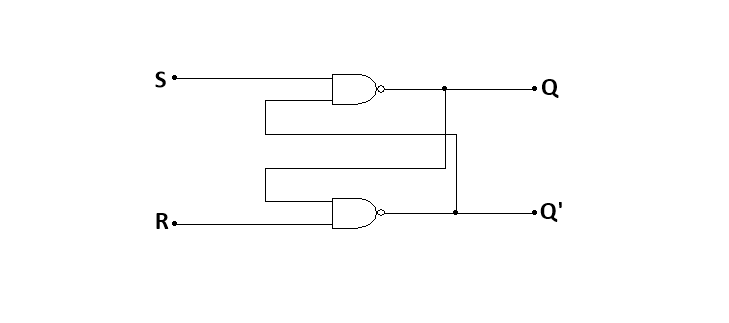
Basic SR Latch using NAND gates.
In this above latch, the output continuously changes as the input changes. We don’t have a kind of control to the output.
We introduce one new signal called enable, by modifying the circuit and introducing the enable signal the latch gives the output as per the required pattern. The modified circuit is provided below:
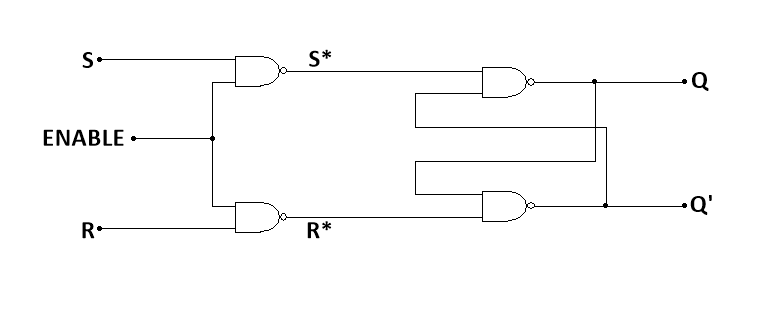
Gated SR Latch using NAND gates.
It is also called as gated SR latch as we are giving one more signal i.e. the ENABLE signal.
When the enable signal is low (0), the latch will retain its memory i.e. latch’s MEMORY STATE. As soon as the enable signal is high (1), the latch will behave as basic latch and will carry out the operations in accordance to the input provided. Hence now we have a kind of control on the output with the help of the enable signal. Since the output changes now in accordance to the level of the enable signal it is called as the level sensitive to the enable signal. (One of main difference between latch and flip flop).
Different types of latches:
- SR Latch
- Gated SR Latch
- D Latch
- Gated D Latch
- JK Latch
- T Latch

Flip Flops
Flip Flop is also the fundamental building block of digital electronics systems. It is the data storage element which stores 0’s and 1’s. It comprises of the basic unit latch plus the clock signal which makes a flip flop. It is edge triggered i.e. they are sensitive to pulse transitions. The signal only propagates through it on the rising or falling edge of the clock signal. This is what it makes different from a latch.
Basic Flip Flop:
A basic flip flop is similar to the gated SR latch only the difference is that it does not have the enable signal instead it has a clock signal which at regular interval of times changes. The circuit is as shown below.
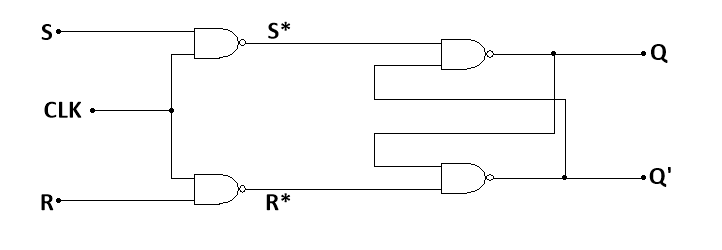
SR Flip Flop using NAND gates.
The operation of this flip flop is somewhat different. During the positive or negative edge of the clock signal the change in the output is taken in accordance to the inputs, hence it is edge triggered circuit. If the transition is at the positive edge of the clock then it is called positive edge triggered circuit and if it is at the negative edge of the clock then it is called negative edge triggered circuit. It can be any edge triggered according to the gates and the clock signal given.
Types of Flip Flops:
- SR Flip Flop
- D Flip Flop
- JK (Master Slave) Flip Flop
- T Flip Flop
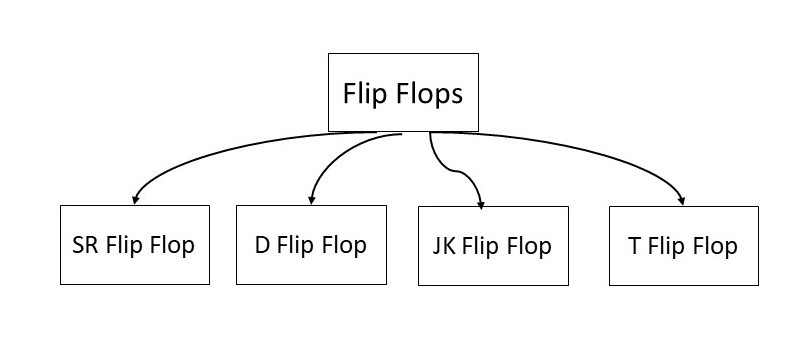
Difference Between Latch and Flip Flop:
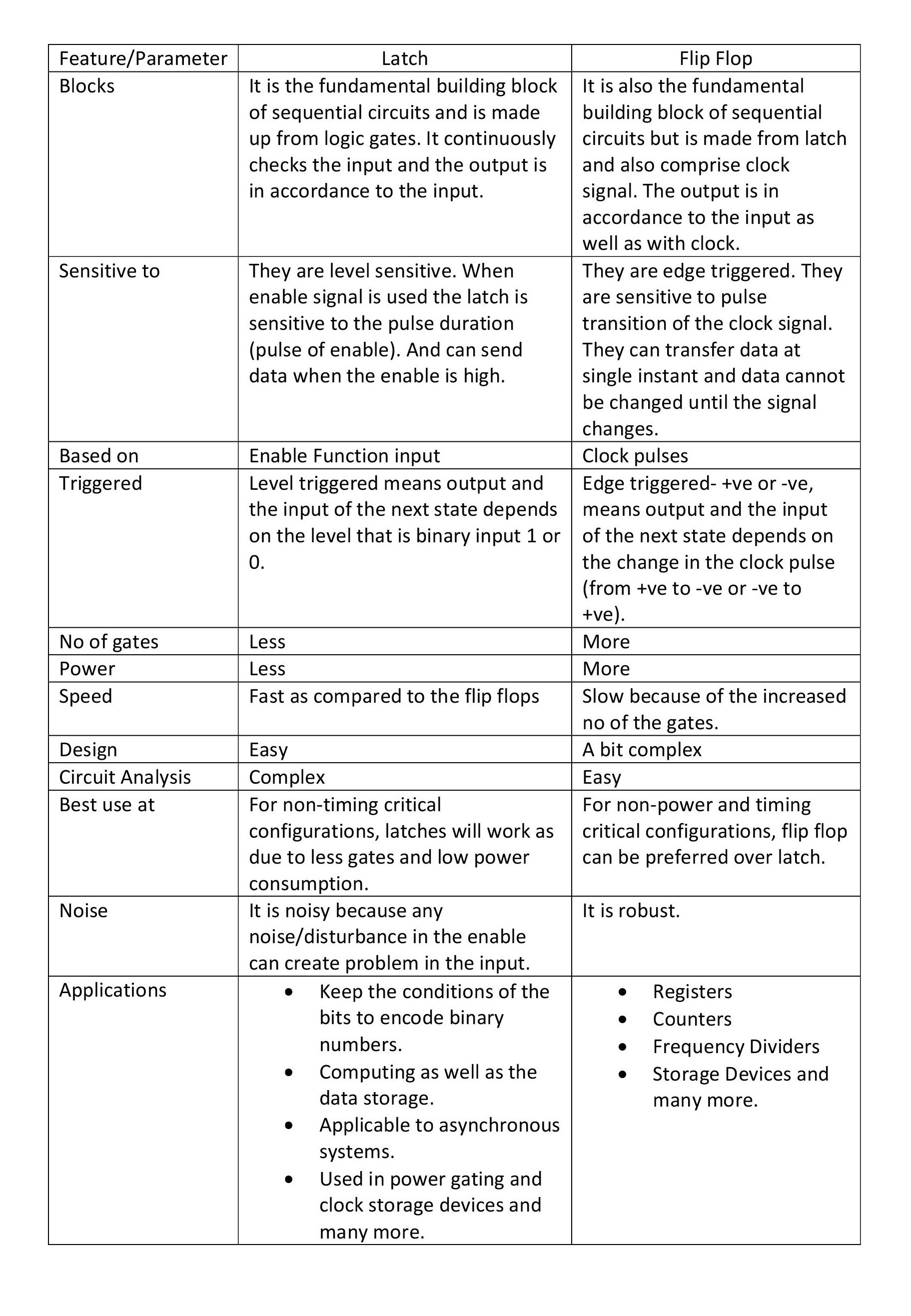
Hence from the above mentioned points, we can conclude that flip flops are more reliable over latches. But still it should be know that flip flop is having itself consists of latch and the clock signal. Hence at few instances, latches may also be used and preferred over flip flops. These are how the basic data storage element !

Discuss about post